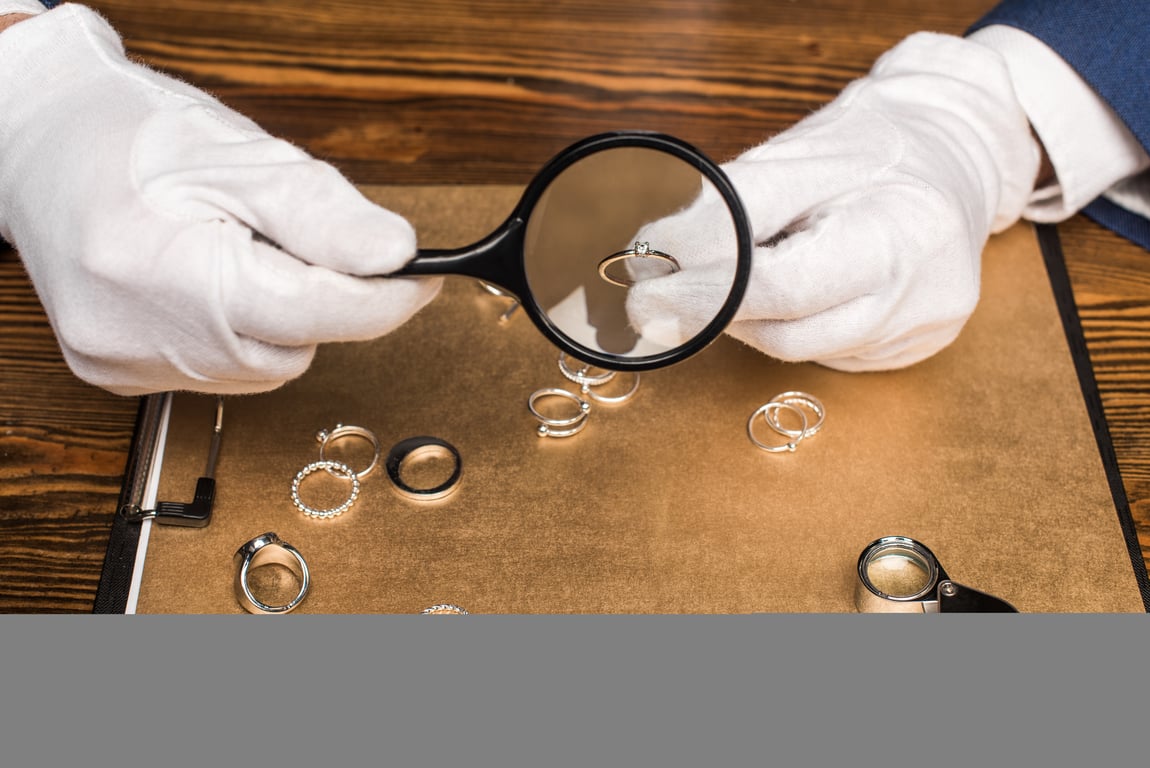Lab created diamond − is this for real? Will my love be portrayed the same way it does with a naturally mined diamond? This is a real struggle when it comes to buying diamonds for her. Rest assured, lab-grown, synthetic, or artificial diamonds, as some like to call them, are as real and as mesmerizing as their natural counterpart.
Man-made diamonds are the new vogue and a massive current in the diamond sales market. They are in no way inferior to the original. They are free from defects, cleaner, and harder than natural ones. They acquire all the characteristics of mined diamonds, including specific features such as strength, structure, shining, refractive index, etcetera.
While there are many things to consider when selecting the right diamond for your engagement ring, such as the 4 Cs, diamond shape, and sticking to your budget, the meaning and origin behind the diamond are equally important.
The word diamond derives from the Greek word Adamas meaning invincible or indestructible. Diamonds are the hardest natural substance on Earth. The only thing that can scratch a diamond's surface is another diamond! Diamonds that are mined are pure carbon atoms. So are the diamonds grown in the lab! Only sturdier.
Can the naked eye detect the difference between the two? How to tell lab created diamonds? Can a jeweler tell if a diamond is lab grown? In the previous article, we answered the question: "How to make a lab created diamond?", and in this blog post, let's take a look at what the experts have to say about the difference between diamonds and lab created.
How to Identify Lab Grown Diamonds?
The variations between the natural gemstone and the workplace mature diamond cannot be differentiated with the naked eye. Natural diamonds have a tiny amount of Nitrogen that lab-created diamonds don't have. This is one of the signifiers gemologists use to identify a lab-grown diamond.
How to Tell If a Diamond is Lab Grown? A lab diamond will test as a genuine diamond because it is chemically, physically, and optically identical to a natural diamond. Specialist equipment can tell a lab diamond from a natural diamond. The origin of a diamond, however, is included on its certificate.
Photoluminescence Spectroscopy is a method that requires deep-freezing of the diamonds to −320 °F (−196 °C). This is how a lab-grown diamond can be told apart from a naturally mined one.
Can a Lab Diamond be insured? Yes! Like your naturally mined diamond, a lab diamond ring should be insured too. A lab diamond will last just as long as a natural diamond. Both measure 10 on the Mohs scale of hardness, making them the hardest natural substance on Earth. The insurance cost is likely less than that of a mined diamond. The insurer would need to see a copy of your order invoice to verify the value of your insurance.
Can Jewelers tell if a Lab Created Diamonds?
The answer is No! While gemologists have expertise in this regard, jewelers cannot tell them apart. Lab diamonds and naturally mined gemstones are of the same quality. They look the same, even to an experienced eye. Traditional jewelers' tools, such as microscopes or loupes, cannot detect the difference between a laboratory-grown diamond and a natural, mined diamond.
Most jewelers have cheap diamond testing tools designed to test between fake diamonds and natural diamonds. These essential tools are not equipped to differentiate between lab-grown and original diamonds. It needs a piece of complex gemological equipment like the DiaTrue Machine from OGI systems, costing over $10,000 to do what is necessary.
Do Lab-Created Diamonds have Laser Inscriptions?
Both natural diamonds and man-made diamonds are inscribed. However, lab diamonds have distinct optical device inscriptions that determine them as lab-made. Jewelers will read this inscription through their loupes or microscopes. This can be the most effective way to tell a lab diamond without sending it off for testing.
The inscription on a lab-grown diamond generally contains a word like Created and Lab Grown (often shortened to LG). But not all lab-grown diamonds are inscribed. So, optical device inscriptions aren't foolproof indicators of a stone's origin.
Conclusion. Lab-grown diamonds are as real as can be. They cannot be told apart through the naked eye, even if it is the trained eye of a jeweler. Only high-tech machines can differentiate between the two. There are numerous tests available to test a diamond for its origin, but the reliability and cost significantly vary.














